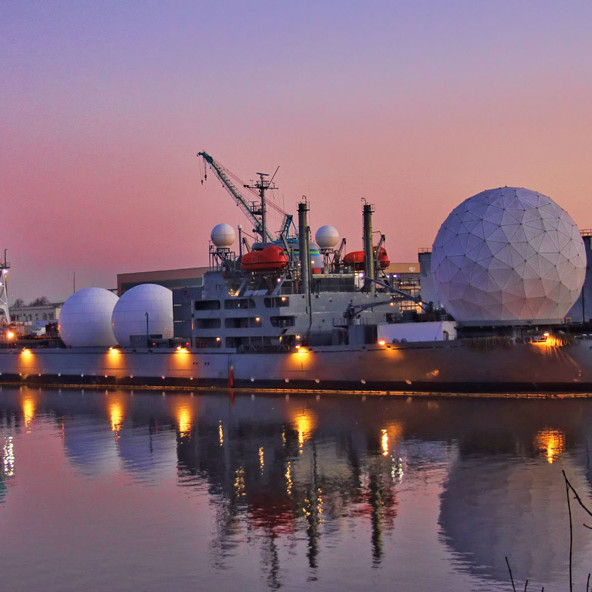Eyes on the Skies

Portlanders admiring sunsets from North Portland’s bluffs may have noticed two odd ships docked amid Swan Island’s cranes. The vessels’ profiles unite eras: the gray hulls of the SS Pacific Tracker and MV Pacific Collector have been afloat for half a century, but the satellite dishes and golf-ball-like structures looming over their decks indicate a recent career change.
Portland has become home to a world-class radar system, one MIT trumpets as a “principal accomplishment” of its defense laboratory. That radar system embarks on a mission both retro and futuristic: helping the United States hone its missile defense.
With the Soviet Union long gone and homeland security more visibly concerned with hijackers and suitcase bombs, missiles have lost their starring role in Americans’ nightmares. However, with wacky North Korea just over the horizon and Iran’s nuclear ambitions an enduring source of tension, our military still wants to know how to shoot projectiles out of the sky. Tracker and Collector are part of that effort.
The US Maritime Administration, which owns and operates the ships, selected Portland’s Cascade General shipyard to retrofit two old hulks. The former navy survey ship USNS Chauvenet, built in 1967, became the Collector in 2007, while the cargo ship SS Mormacdraco’s transformation into the Tracker (one cost estimate: $68 million) was completed just last year.
The remade ships combine old technology and new. (The Tracker is powered by steam.) While the Maritime Administration runs the ships, their periodic missions to undisclosed ocean locations are undertaken on behalf of the Missile Defense Agency, a research arm of the Defense Department. At sea, the MDA fires dummy missiles overhead to test anti-missile systems. The Tracker and Collector monitor the results. Officials are otherwise somewhat terse regarding the ships’ role.
It isn’t clear exactly why Portland became the ships’ base. In any case, the two vessels definitely make for one of the most compelling sights on our local waterfront. They also prove, as one ship-enthusiast’s blog noted, that “old ships are worth something”—and, perhaps, that old geopolitical habits die hard.



